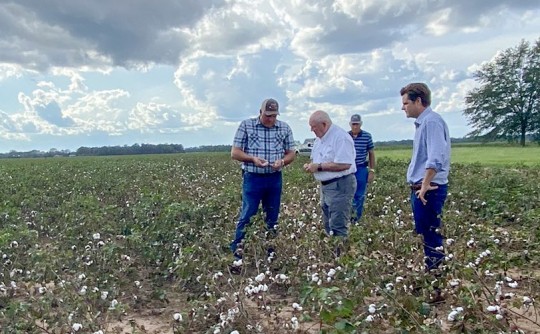USDA Offers Hurricane Sally Disaster Assistance To Farmers
October 1, 2020
Hurricane Sally’s flooding and high winds impacted agricultural operations in Florida and surrounding states, and the U.S. Department of Agriculture (USDA) has technical and financial assistance available to help farmers and livestock producers recover. As agricultural producers move into recovery mode and assess damages, they should contact their local USDA Service Center to report losses and learn more about program options available to assist in their recovery from crop, land, infrastructure and livestock losses and damages.
SDA encourages farmers and ranchers to contact the FSA county office at the local USDA Service Center to learn which documents should be provided to help the local office expedite assistance, such as farm records, receipts and pictures of damages or losses.
Producers and landowners can use the online Disaster Assistance Discovery Tool , answering five questions to identify USDA programs that will help meet disaster recovery needs.
Depending on the operation, FSA offers a number of disaster assistance programs to help offset eligible losses, including the Livestock Indemnity Program, Emergency Assistance for Livestock, Honeybees, and Farm-Raised Fish Program, Emergency Conservation Program, Emergency Forest Restoration Program, Noninsured Crop Disaster Assistance Program (NAP) and Tree Assistance Program. Additionally, producers located in counties with a primary or contiguous disaster designation may be eligible for low-interest emergency loans to help them recover from production and physical losses.
USDA’s Natural Resources Conservation Service (NRCS) also offers programs to help in the recovery process. The Environmental Quality Incentives Program (EQIP) can help producers plan and implement conservation practices on land impacted by natural disasters. “NRCS can be a very valuable partner to help landowners with their recovery efforts,” said Juan Hernandez, state conservationist for the NRCS in Florida. “Our staff will work one-on-one with landowners to make assessments of the damages and develop approaches that focus on effective recovery of the land.”
Producers with Federal crop insurance coverage should contact their crop insurance agent for assistance. Producers should report crop damage to their agent within 72 hours of damage discovery and follow up in writing within 15 days.
Additional NRCS programs include the Emergency Watershed Protection (EWP) program, which provides assistance to local government sponsors with the cost of addressing watershed impairments or hazards such as debris removal and streambank stabilization. Eligible sponsors include cities, counties, towns, conservation districts or any federally recognized Native American tribe or tribal organization. When a watershed impairment occurs due to a natural disaster event, the district conservationist serves as the local facilitator for EWP activities.
Pictured: USDA Secretary Sonny Perdue and Congressman Matt Gaetz survey Hurricane Sally damage on Monday. Photo for NorthEscambia.com, click to enlarge.




Comments